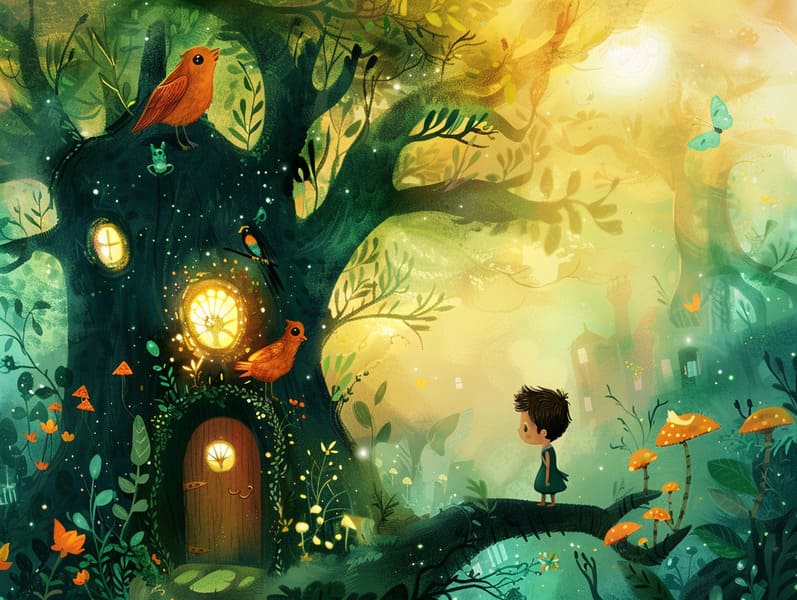Understanding the Legacy of Fairy Tales with the Steadfast Mystique.
Understanding the Legacy of Fairy Tales with the Steadfast Mystique.
Blog Article

Grimm's fairy tales have long histories. These narratives have been told from one generation to the next ages before they were ever inscribed. They emerged from a variety of civilizations, including Western traditions. They were initially disseminated among mature audiences, often carrying themes and messages relevant to the societal norms and beliefs of the time.
The famous Grimm duo, Jacob and Wilhelm, were among the first to compile and release many of these beloved stories. Their published works, "Grimm's Folk Tales," included stories like "The True Bride," "Hansel and Grethel," and "The True Story of Snow White," which have since become hallmarks in the world of famous fairy tales. Similarly, Hans Christian Andersen's whimsical fairy tales, such as "The Little Mermaid," and "The Ugly Duckling," have captivated hearts worldwide, guaranteeing their place in the pantheon of famous fairy tales.
Though they are old, these tales remain as important as ever, especially as children's night stories. These delightful tales are now available in various formats, including artistically illustrated books, fantastical animations, and internet fairy tales.
Their lasting appeal can be connected to several fascinating points:
Important Morals: Traditional fairy tales often impart important moral lessons. Tales like "The Tale of the Boy Who Cried Wolf" teach the importance of truth, while "The Race of the Tortoise and the Hare" underline the qualities of steadfastness and unpretentiousness. These tales offer kids clear distinctions between truth and falsehood, guiding their moral compass in a soft yet profound way.
Empathy and Understanding: Ancient fairy tales frequently include characters facing struggles and tests, inciting readers to empathize with their struggles and applaud their triumphs. For instance, "The Tale of Beauty and the Beast" shows us the virtue of looking deeper to realize the true nature of a character, strengthening perception and perception.
Cultural Perception: Many fairy tales are interwoven with the cultural contexts from which they were born. Learning from these fairy tales can provide intriguing perspectives into different cultures, developing a sense of cultural respect and knowledge.
Inventiveness and Imagination: The enchanted elements in fairy tales—magic wands—enliven children’s inventiveness. These stories guide readers to mythical realms, provoking innovative ideas and a sense of amazement that continues a lifetime.
Ancient fairy tales are not only magical but also edifying. They provide alluring tools in nurturing various thinking and feeling skills in young ones. When traditional fairy tales are spoken out loud, they advance speech development by presenting new words and complex sentence structures. This practice also cultivates listening abilities and concentration, as young ones hang on every word, keen to see what happens next.
Furthermore, examining the themes and characters of fairy tales can improve evaluative skills and critical thinking. Young readers are instructed to spot patterns, forecast, and realize cause and effect. These talks also assist the young convey their thoughts and feelings, contributing to their emotional intelligence.
In today’s technological era, the presence of online storybooks has made these narratives more accessible than ever. Internet resources and mobile apps feature huge assortments of popular fairy tales that can be seen or listened on anytime, anywhere. Fairy tales read aloud are particularly in demand, supplying an charming way for young ones to be a part of these fantastical tales. Narrated books and read-out-loud videos lead characters and settings to life, often complemented by captivating soundtracks and background music that enhance the tale experience.
The persistent attraction of traditional fairy tales lies in their ability to alter to present days while sustaining their central values. Contemporary revisions of these tales often present more diverse protagonists and modern settings, making them meaningful to today’s audience. However, the central morals of guts, understanding, and impartiality remain unchanged, continuing to resonate with young listeners of all ages.
Old fairy tales also offer a sense of ease and comprehensibility. They allow a structured narrative with a recognizable beginning, middle, and end, often concluding with the closure of conflicts and the triumph of morality over immorality. This reliability can be placating for children, making available a sense of reliability in an dynamic world.
Old fairy tales continue to fascinate and edify new generations, maintaining their loveliness and value in modern society. As bedtime stories for kids, they yield a perfect blend of fascination and comprehension, furthering moral values, empathy, and creativity. The presence of digital fairy tales and the favor of fairy tales narrated these guys warrant that these classic narratives remain attainable to new generations.
By sustaining and relating these tales, we continue to honor the rich tapestry of cultural heritage and cultural heritage. Whether you are viewing a beautifully illustrated book, experiencing a online collection, or listening through an read-aloud book, the loveliness of classic fairy tales is always within reach. These tales illustrate of the endless presence of fairy tales and its ability to bind us across eras and regions.
If you are viewing a vibrantly illustrated book, discovering a internet collection, or listening on an audiobook, the loveliness of popular fairy tales is always within reach.
These fairy tales reveal of the perpetual impact of narratives and its ability to unite us across eras and regions, establishing a link that charms and informs alike.